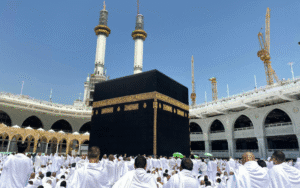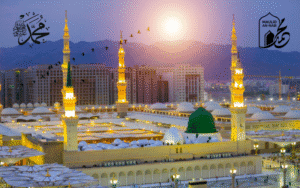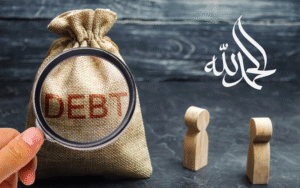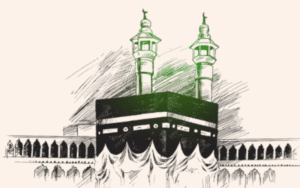The Complete Rules of Hijab: Honor, Obedience, and Purity
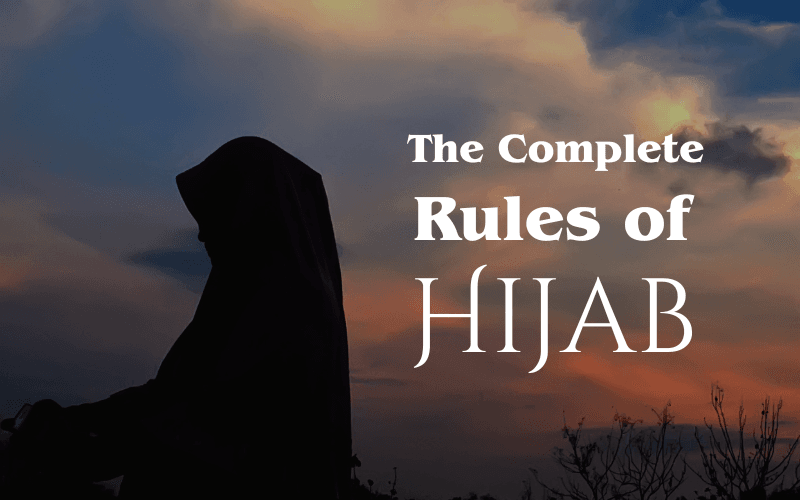
Islam is a complete and profound blessing for humanity. As a divinely chosen way of life, its commandments guide people toward peace, order, and well-being. A cornerstone of this divine law is the commandment of Hijab (often called Parda). The Rules of Hijab serve a vital purpose. They specifically safeguard a woman’s honor and protection. They also ensure the overall purity of society. Therefore, the Hijab stands as a symbol of a woman’s dignity. It is the definitive path to achieving Iffah (chastity and virtue).
A common misconception suggests that the rules of Hijab apply only to women. This idea is incorrect. Modesty in Islam and a form of Hijab are obligatory for everyone, though the nature of their observance differs. The core purpose of Hijab is to preserve the heart’s purity for everyone. Allah Almighty Himself declares this in the Quran:
ذَٰلِكُمْ أَطْهَرُ لِقُلُوبِكُمْ وَقُلُوبِهِنَّ
“…That is purer for your hearts and their hearts.”
(Surah Al-Ahzab: 53)
Consequently, to protect society from moral decay and to shield the character of today’s youth, a complete adherence to the principles of Hijab is an undeniable necessity.
The Foundation of Hijab: Evidence from the Quran and Sunnah
The Hijab is an unequivocal and mandatory commandment in Islam. Numerous verses of the Holy Quran and an extensive body of authentic Hadith firmly establish this ruling.
Hijab in the Quran: Understanding the Key Verses
1. The Command to Cover with the Jilbab (Outer Garment)
يَا أَيُّهَا النَّبِيُّ قُل لِّأَزْوَاجِكَ وَبَنَاتِكَ وَنِسَاءِ الْمُؤْمِنِينَ يُدْنِينَ عَلَيْهِنَّ مِن جَلَابِيبِهِنَّ ذَٰلِكَ أَدْنَىٰ أَن يُعْرَفْنَ فَلَا يُؤْذَيْنَ وَكَانَ اللَّهُ غَفُورًا رَّحِيمًا
“O Prophet, tell your wives and your daughters and the women of the believers to bring down over themselves [part] of their outer garments (Jilbab). That is more suitable that they will be known and not be abused. And ever is Allah Forgiving and Merciful.”
(Surah Al-Ahzab: 59)
Interpretation: The renowned companion, Abdullah ibn Abbas (RA), explained this verse clearly. He stated, "Allah has commanded the believing women that when they leave their homes for a necessity, they should cover their faces from above their heads with the Jilbab, leaving only one eye exposed (to see the way)." (Tafsir al-Tabari)
2. The Command to Speak from Behind a Partition (Hijab)
وَإِذَا سَأَلْتُمُوهُنَّ مَتَاعًا فَاسْأَلُوهُنَّ مِن وَرَاءِ حِجَابٍ
“And when you ask [the Prophet’s wives] for something, ask them from behind a partition (Hijab).”
(Surah Al-Ahzab: 53)
Interpretation: Although Allah revealed this verse about the wives of the Prophet (ﷺ), its ruling applies to all believing women. Indeed, if this precaution was "purer" for the hearts of the noble companions and the Mothers of the Believers, its necessity in our modern era is self-evident.
3. The Command Against Displaying Adornment
وَقُل لِّلْمُؤْمِنَاتِ يَغْضُضْنَ مِنْ أَبْصَارِهِنَّ وَيَحْفَظْنَ فُرُوجَهُنَّ وَلَا يُبْدِينَ زِينَتَهُنَّ إِلَّا مَا ظَهَرَ مِنْهَا
“And tell the believing women to reduce [some] of their vision and guard their private parts and not expose their adornment (Zinah) except that which [necessarily] appears thereof…”
(Surah An-Nur: 31)
Interpretation: The great companion Abdullah ibn Mas'ud (RA) commented on the phrase "except that which [necessarily] appears thereof." He stated that this refers to the outer clothing itself. According to his view, a woman must conceal her entire body, including her face, from non-Mahram men.
4. The Command to Cover the Chest with the Khimar (Headscarf)
وَلْيَضْرِبْنَ بِخُمُرِهِنَّ عَلَىٰ جُيُوبِهِنَّ
“…and to wrap a portion of their headcovers (Khimar) over their chests…”
(Surah An-Nur: 31)
Interpretation: The Mother of the Believers, Aisha (RA), reported a significant event. She said, "When this verse was revealed, the Muhajir (emigrant) women tore their thick waist-wraps and covered themselves with them." (Sahih al-Bukhari). The esteemed scholar Ibn Hajar al-Asqalani (rh) later explained that "covered themselves" meant "they covered their faces." (Fath al-Bari)
5. The Prohibition of Revealing Hidden Adornments
وَلَا يَضْرِبْنَ بِأَرْجُلِهِنَّ لِيُعْلَمَ مَا يُخْفِينَ مِن زِينَتِهِنَّ”
…and let them not stamp their feet to make known what they conceal of their adornment.”
(Surah An-Nur: 31)
Interpretation: In this verse, Allah forbids women from walking in a way that makes their anklets audible to non-Mahram men. From this, we can easily understand that Allah also forbids any action, posture, or beautification that is even more likely to attract attention.
The Detailed Rules of Hijab in the Hadith
Numerous authentic hadiths offer detailed guidance on Hijab. This collection of Hadith on Hijab further clarifies its application.
The Prophet Muhammad (ﷺ) said, “The woman is Awrah (meant to be concealed). When she leaves her home, Shaytan (Satan) raises his hopes for her.”
(Jami` at-Tirmidhi, Hadith 1173)
In the “Incident of Ifk,” Aisha (RA) recalled, “When I saw Safwan ibn al-Mu’attal (RA), I covered my face with my Jilbab, because he had seen me before the verse of Hijab was revealed.”
(Sahih al-Bukhari, Hadith 4750)
A woman in a state of Ihram (for Hajj or Umrah) cannot wear the Niqab (face veil) or gloves. (Sahih al-Bukhari, Hadith 1838). The scholar Qadi Abu Bakr ibn al-Arabi (rh) commented, “This hadith proves that it is obligatory for a woman to cover her face in normal circumstances; the time of Hajj is the exception.”
The Prophet (ﷺ) said, “Beware of entering upon women.” A man from the Ansar then asked, “O Messenger of Allah! What about the in-law (e.g., a husband’s brother)?” He replied, “The in-law is death.” (Sahih al-Bukhari, Hadith 5232)
Asma bint Abi Bakr (RA) said, “We used to cover our faces from men.”
(Mustadrak al-Hakim, 1/454)
The Prophet (ﷺ) never touched the hand of a non-Mahram woman. He would say, “I do not shake hands with women.”
(Muwatta Malik, Book 55, Hadith 1813; Sunan an-Nasa’i, Hadith 4181).
This proves that one must observe Hijab even with spiritual guides.
The Prophet (ﷺ) issued a severe warning about women who are “dressed yet naked.” He powerfully stated, “They will not enter Paradise, nor will they smell its fragrance.”
(Sahih Muslim, Hadith 2128)
Understanding Mahram and Non-Mahram: Key Rules of Hijab
The Rules of Hijab in Islam apply to interactions with all Non-Mahram men. Understanding this distinction is crucial for correct observance.
- Mahram: A Mahram is a close male relative with whom marriage is permanently forbidden. A woman does not need to observe Hijab in front of her Mahrams. They fall into three categories:
- By Blood Relation (Nasab): Father, grandfather; son, grandson; brothers; nephews; and paternal and maternal uncles.
- By Milk Relation (Rada’ah): Foster-father, foster-brother, foster-son, etc. The Prophet (ﷺ) said, “What is forbidden by blood relation is also forbidden by milk relation.”
- By Marital Relation (Musaharah): Father-in-law, husband’s sons (step-sons), son-in-law, and stepfather.
- Non-Mahram: Any man who is not a Mahram is a Non-Mahram. A woman must observe Hijab in front of him, as it is obligatory (Fard). This includes cousins, the brother-in-law, husband’s uncles, a sister’s husband, and all other men outside the Mahram categories.
The Purpose of Hijab: Wisdom and Benefits
Observing Hijab is not merely an external act. On the contrary, it connects deeply to spiritual and social well-being. The purpose of Hijab is multifaceted.
- Obedience to Allah: First, adhering to Hijab is a direct act of obedience to Allah and His Messenger (ﷺ). This is the essence of faith.
- A Mark of Faith (Iman): When some women in thin clothing came to Aisha (RA), she told them, “If you are believing women, then this is not the dress of believing women.” This shows proper Hijab is a sign of true faith.
- A Form of Haya (Modesty): The Prophet (ﷺ) said, “Indeed, Allah is modest and concealing, and He loves modesty and concealment.” (Sunan Abi Dawud, Hadith 4012). Hijab physically manifests this cherished Islamic value.
- Purification of the Heart: Moreover, the Quran itself declares Hijab as a means of attaining “purity of the heart” for all individuals.
- The Path to Iffah (Chastity): Hijab is the divine shield that protects a woman’s chastity. The Prophet (ﷺ) himself used to pray to Allah for Iffah, a celebrated quality of the women of Paradise.
In contemporary life, observing Hijab comes with its own challenges. For this reason, women must be vigilant in various modern situations.
- In Education and Healthcare: For instance, if a young woman’s tutor is male, she must exercise extreme caution. The same applies if a female doctor is available yet a male doctor is chosen without necessity. If seeing a male doctor is unavoidable, a Mahram must accompany her.
- Technology and Modesty: Likewise, misusing mobile phones and social media can become a gateway to fitnah (temptation). Engaging in casual chats with Non-Mahram men contradicts Quranic guidance. This can lead to severe consequences, especially if done in a soft or alluring tone.
- Deception in the Name of Spirituality: Some fraudulent “spiritual guides” may claim to be “spiritual fathers” to relax the Rules of Hijab. We must remember that no one is above the laws of the Quran and Sunah. A person who violates the clear command of Hijab cannot be a true guide.
The Core Insight
The evidence from the Quran and Sunnah makes it unequivocally clear. Hijab is a divine institution of honor, not a symbol of oppression or a barrier to progress. It elevates a woman’s status and protects her from objectification. It ensures people value her for her intellect and character, not her appearance. In the proper observance of the Rules of Hijab lies the true peace, security, and success for individuals, families, and society, both in this world and the Hereafter.
May Allah Almighty grant all of us the understanding and ability to embrace this beautiful commandment and reap its countless blessings. Ameen.
Frequently Asked Questions
What is the core purpose of Hijab?
The core purpose of Hijab is to preserve the heart's purity for all individuals. The Quran states, "That is purer for your hearts and their hearts"
(Surah Al-Ahzab: 53).
Who is a Mahram?
A Mahram is a close male relative with whom marriage is permanently forbidden. A woman does not need to observe the full Hijab in front of her Mahrams, who fall into categories like those related by blood, milk, or marriage.
Who is a Non-Mahram?
A Non-Mahram is simply any man with whom a woman is permitted to marry. This includes cousins, brothers-in-law, a sister's husband, and all other men outside the designated categories of permanent close relatives (Mahrams).
What is the benefit of Hijab?
The article highlights that Hijab is a divine institution with multiple benefits. The primary spiritual and social benefits are:
- Obedience to Allah: It is first and foremost a direct act of faith (Iman).
- Purity of the Heart: The Quran itself declares Hijab as a means of attaining "purity of the heart" for all individuals.
- Dignity and Protection: It safeguards a woman's honor, dignity, and chastity (Iffah). It acts as a shield, protecting her from objectification and ensuring she is valued for her intellect and character, not her appearance.
- Societal Purity: It ensures the overall purity and moral well-being of society.

